Tinker Crate is a subscription box that inspires kids to learn about science, engineering, and technology, all while having lots of fun. Each month, the box explores a field of study within a STEM (Science, Technology, Engineering, and Math) discipline. Kids practice their problem-solving skills and learn how to engage in both structured and open-ended exploration and investigation. Most boxes walk the tinkerers through the construction of fairly complex mechanical devices.
This month’s theme is Spin Art Machine!
Everything arrives together in a single Tinker Crate – the supplies, a fold-out instruction sheet, and the Tinker Zine.
DEAL: Use this link to save 30% on your first box of Tinker Crate! (or Kiwi Crate and the KiwiCo family subscriptions Koala Crate and Doodle Crate).
The kit includes all the materials needed to construct the main project, a spin art machine!
In addition to the cool stuff found in the Tinker Zine, most crates have a secondary project or extension activities that build on the primary project, extending the exploration and focusing in on the science principles demonstrated by the main project. Sometimes you need to provide some simple items from home for the second project or the additional explorations suggested in the Tinker Zine.
The instructions and other project info are printed on a faux blueprint fold-out sheet. One side of the sheet has pointers for using your newly-constructed device, plus an inventory of all the supplies provided in the Crate.
The other side contains highly-detailed illustrated instructions with lots of explanatory blurbs, close-ups of technical areas, and arrows to show where parts are to be placed.
They include checkpoints to verify that assembly is going properly, plus, there is help available if needed!
The main project is always a great hands-on activity and a great demonstration of the scientific principles featured in the box, but the Tinker Zine is full of well-written, historically and scientifically accurate background and explanatory materials. This where the lessons really take shape!
Like most Tinker Crates, this Crate featured a single, big build with options for further modification and experimentation.
Our kids always read the Tinker Zine completely before tackling the project. Having learned a bunch about the project before building it, she asks really pointed questions during the build and initiates discussions about how the project works. The combination of age-appropriate support materials and a cool hands-on project really makes for engaged learners!
The Zine’s articles are very in depth, and they use accurate scientific terminology to describe the explored phenomena, yet it’s really well suited to the target age. The pedagogical approach is great for a variety of learners – historical examples are used to illustrate the scientific principles in action, and there is always a balance of text, pictures, diagrams, and hands-on activities.
They do a great job of keeping it light and fun, too!
Tinkering is big part of the Crate (to no one’s surprise), with lots of opportunity for further exploration. This section included instructions for increasing the resistance in the circuit powering our spinner, making the wheel spin more slowly.
The instructions are very detailed, with enough information provided at every step that you never have to guess what to do next.
This project didn’t require as much manual dexterity as some do, and my eight-year-old did everything pretty much by herself.
This was the only part she needed help on. The resistor wires needed to be pushed way down into the breadboard, and they bent too readily to make the task easy. I had a little trouble with it too, but the resistors were resilient enough to withstand a lot of fiddling (and they provided extras just in case).
The remaining connections were simple to make.
I am always amazed at the versatility of the Crate itself – the majority of projects incorporate the Tinker Crate box as a frame, container, or platform. This configuration allowed us to turn the machine on and off without digging into the box, and we could even close the lid while it spun if we wanted.
The wheel spun really fast, but the kit also included instructions for slowing it down a bit with the extra resistors.
One of our paintings, immediately upon completion. The kit included four little squeeze bottles of paint and a stack of square papers. Any moderately viscous paint (like tempera) would work well, and I’m sure some cool design could be made from even thinner paint once the wheel is adjusted to move at the slower speeds.
Tinker Crate is tons of fun for our kids. It has a great balance of learning, building, and playing – you never build a static model, and there is always some tinkering, experimentation, or other use of the project once it is built. Many of the projects could be kept for quite a time and can be used over and over again (though most are not quite toddler-proof). Tinker Crate’s projects and supporting materials make complex scientific and engineering principles easy for kids to understand and see in action. It is a superb activity for evenings, weekends, and school vacations, as it’s always fun and keeps kids mentally engaged and using their brains.
Have you tried Tinker Crate yet with your kids?
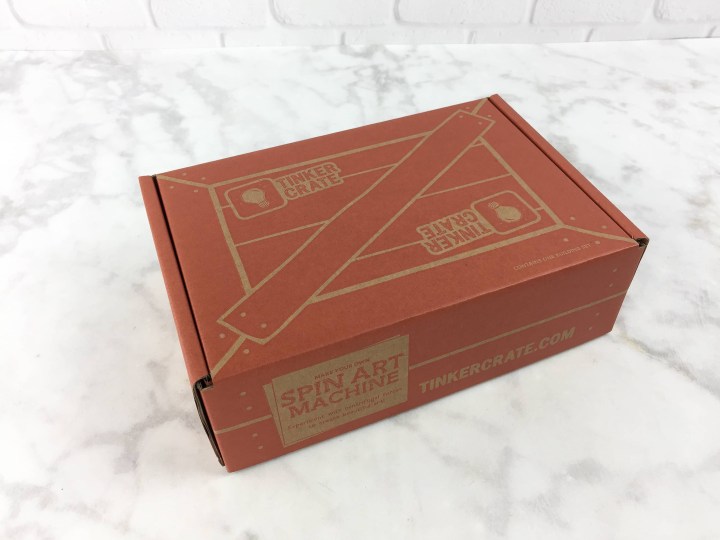
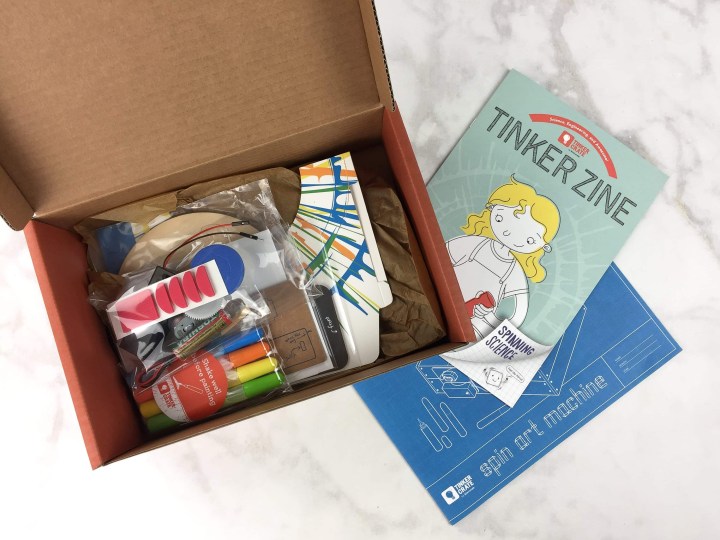

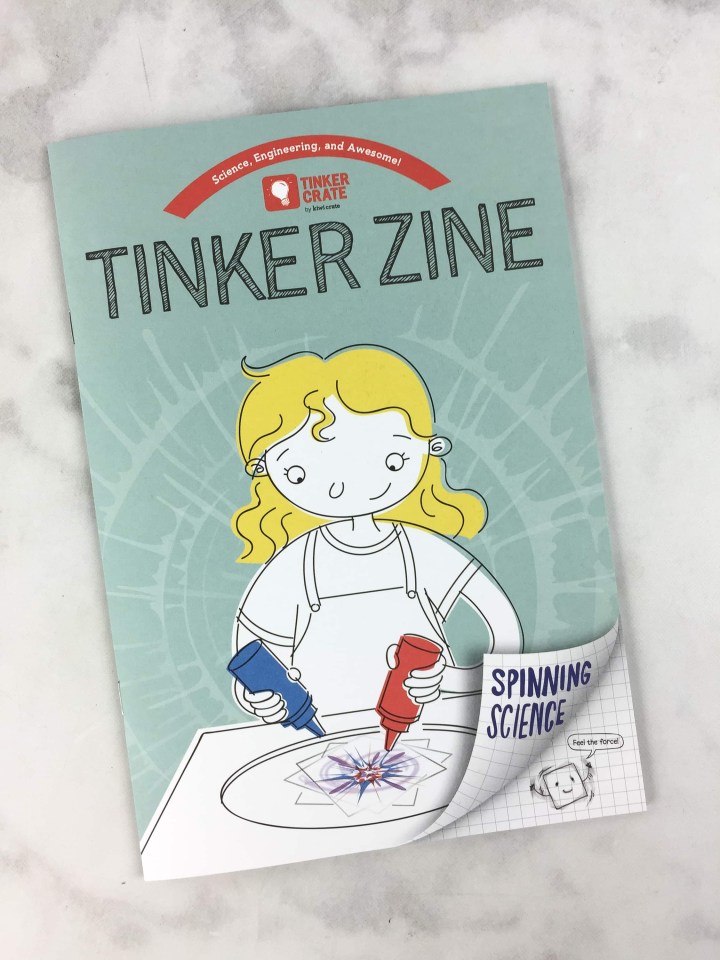
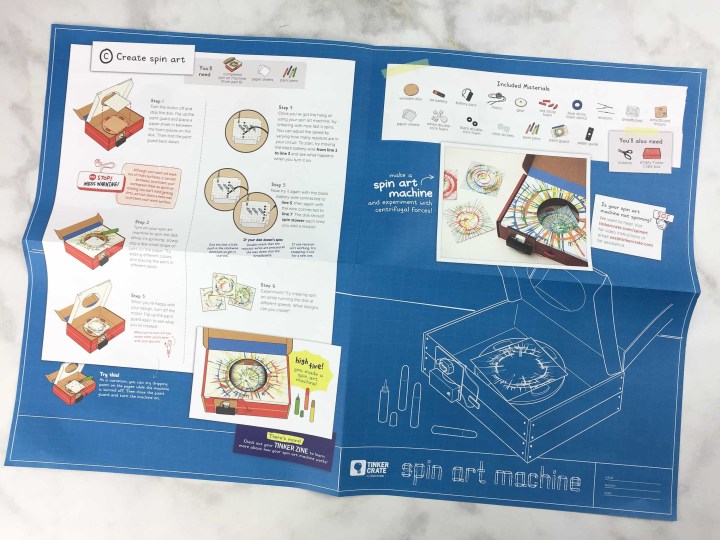
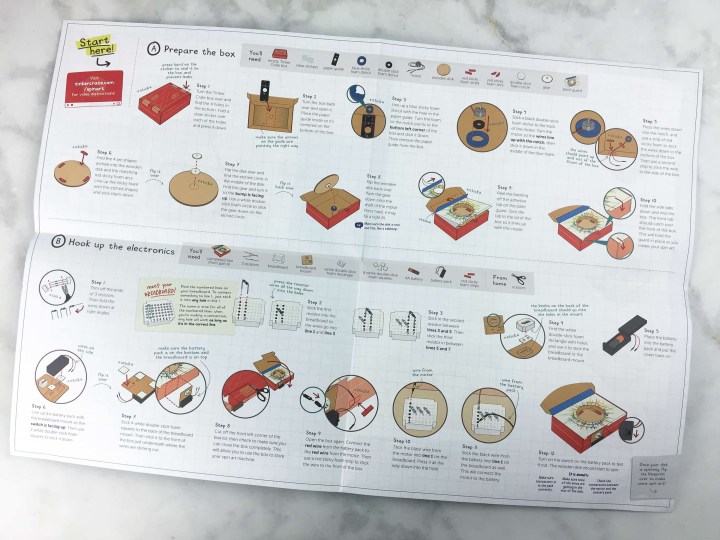
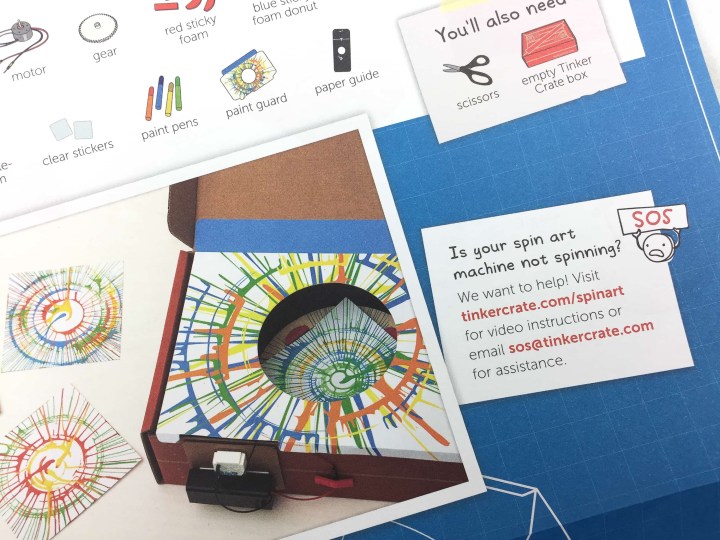
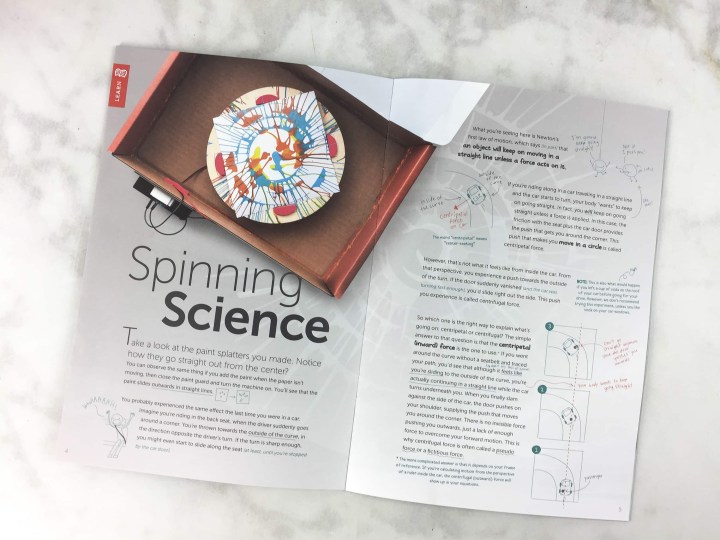
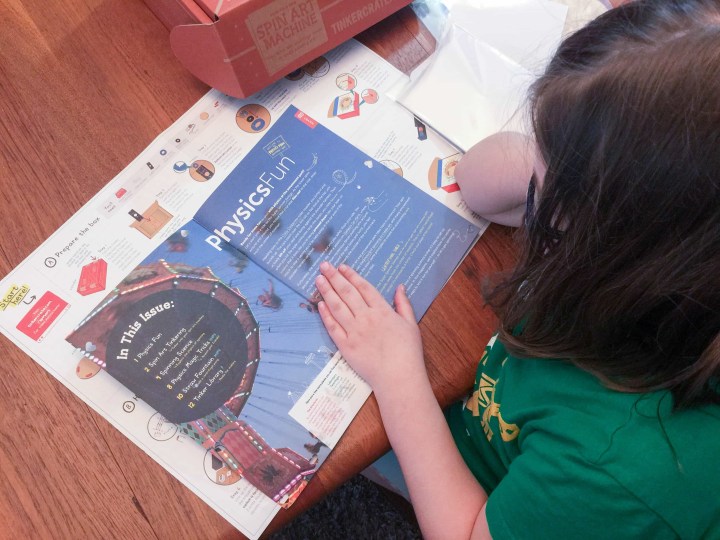
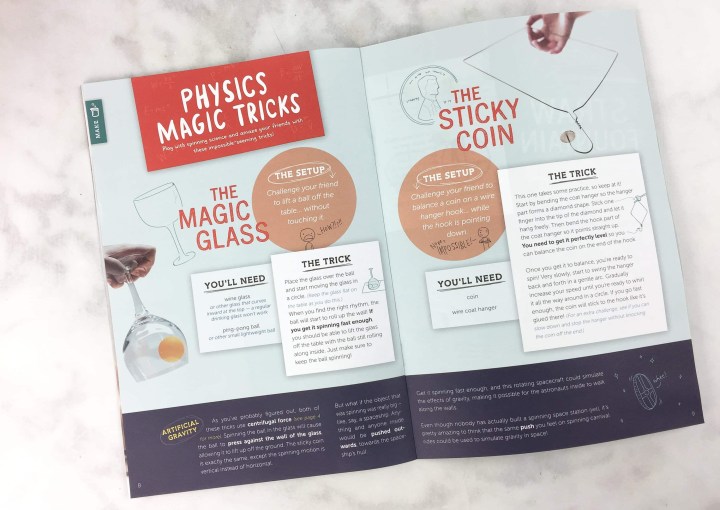
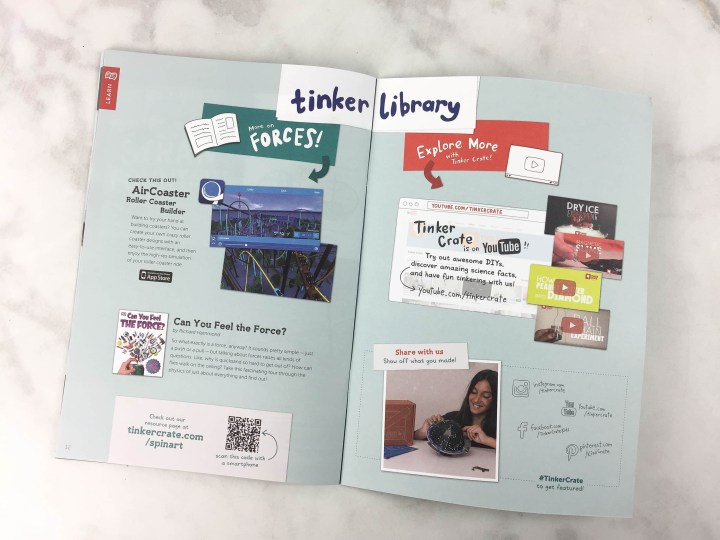
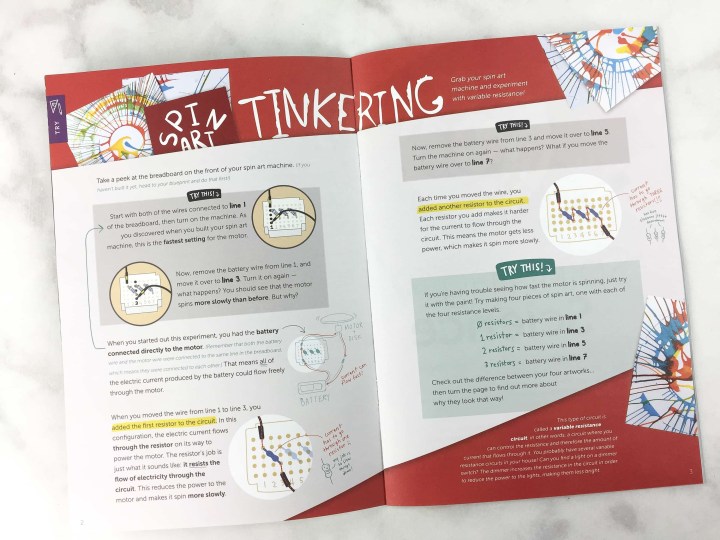
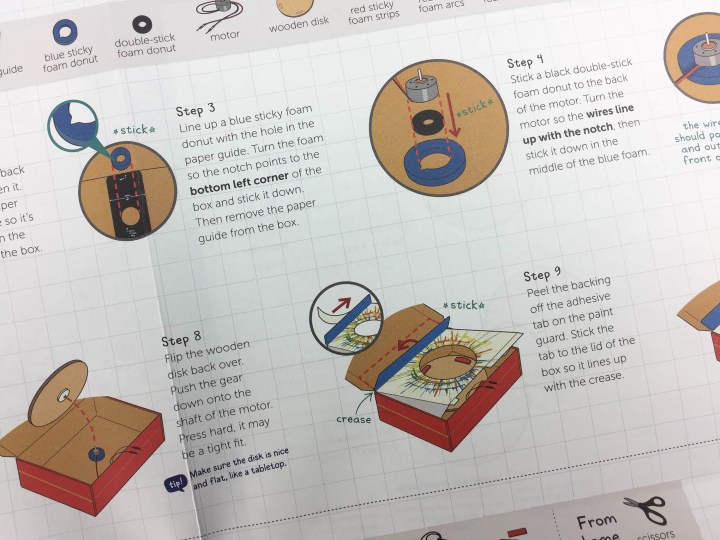

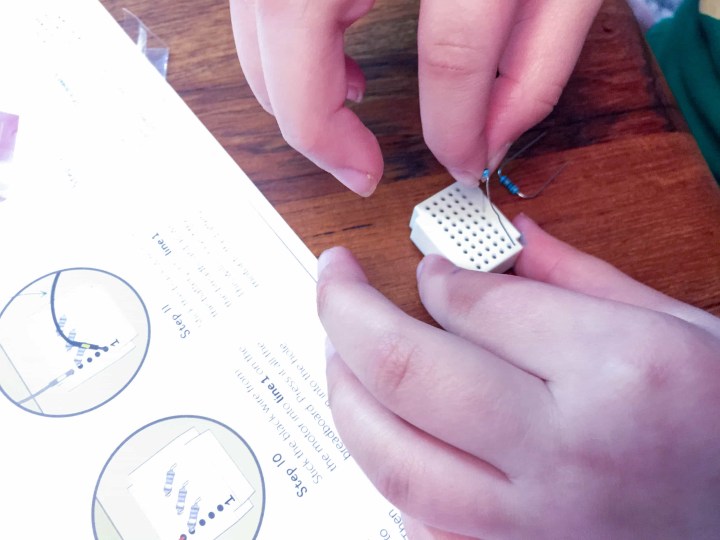
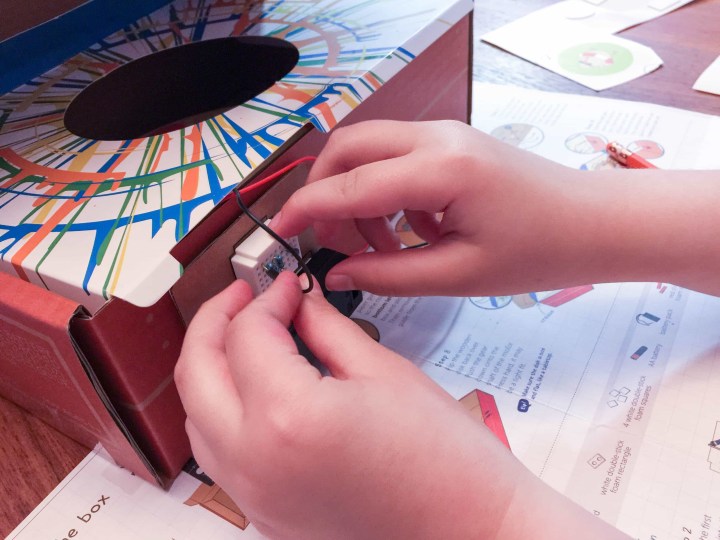

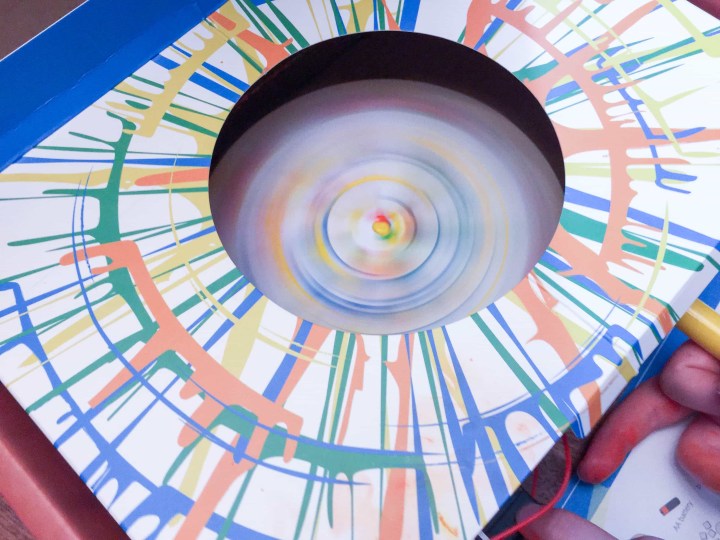






Comments